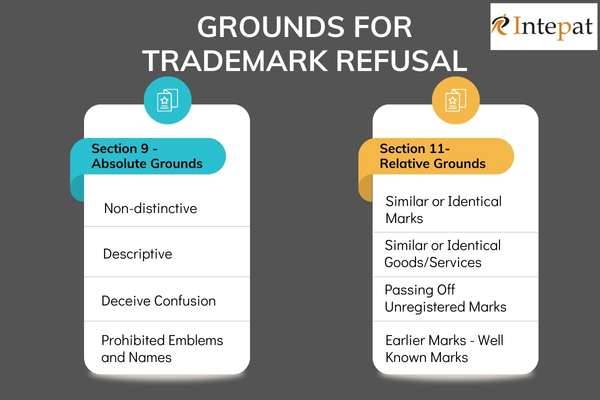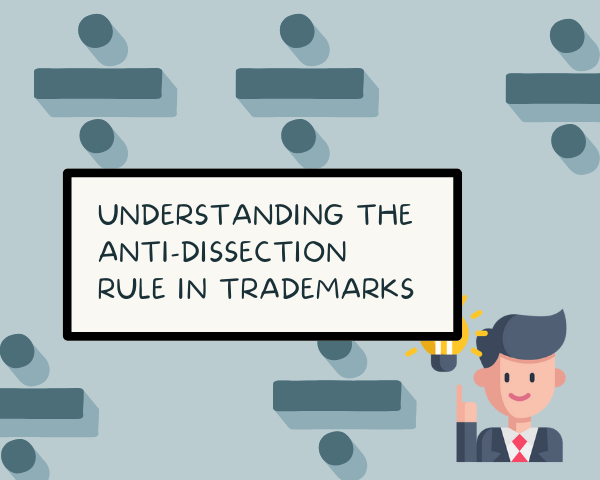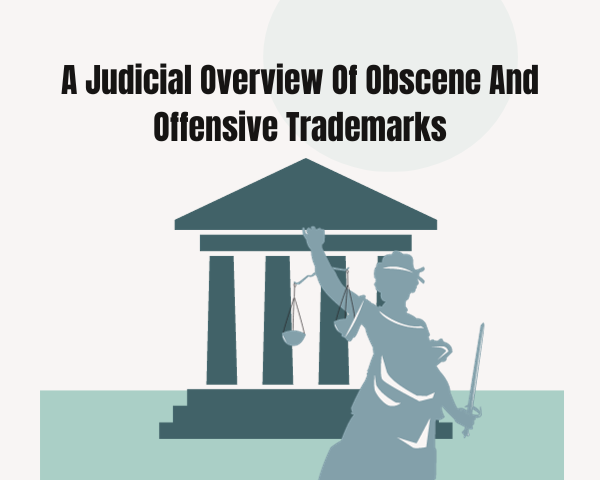Sections 9 and 11 of the Trademark Act
A trademark helps you strictly distinguish your goods from others in the market. Hence, a trademark may be any symbol, word, configuration, device, shape, or combination of colors in packaging or the goods themselves.
The Trademarks Act 1999 sets out the absolute and relative grounds for the refusal of registration of trademarks under the Act. Apart from a few exceptions, relative grounds of refusal are applicable when a similar trademark exists.
One can refuse a trademark application for absolute or relative grounds in compliance with “Sections 9 and 11 of the Trademark Act”.
Let’s discuss further the absolute and relative grounds for refusing a trademark.
Absolute grounds for refusal of registration of trademark:
Section 9 of the Trademark Act lays down absolute grounds for the refusal of registration of trademarks under the Act.
Section 9(1) provides trademarks are not registerable if:
a) Trademarks that are incapable of distinguishing the goods/services of the applicant from those of others.
Let us take the example of Imperial Tobacco Co. of India Ltd. v. The Registrar of Trademarks [AIR 1977 Cal. 413]. Imperial Tobacco Company is a well-known company manufacturing and selling cigarettes named ‘Simla.’ The Registrar refused to grant a trademark, and the company appealed to the High Court of Calcutta. However, the High Court of Calcutta dismissed the appeal stating that ‘Simla’ is a popular geographical location, and hence, it is unregistrable as a trademark.
b) A trademark specifies the kind, quality, geographical origin, time of production, or characteristics of goods or services.
For example, in the case of M/s Hindustan Development Corporation Ltd. v. The Deputy Registrar of Trademarks [AIR 1955 Cal. 519], the court held that the mark “Rasoi” could not be registered for edible oils because it shows the nature of the product.
c) Trademarks are exclusive marks that have become common in the current language or the bonafide and trade practices. Hence, if there is enough evidence that a large group of people uses the same mark, we cannot register it in the name of any person.
Section 9(2) makes a mark non-registrable if-
1) A mark can not be allowed if it deceives the public or causes confusion. Section 9(2) (a) primarily concerns the deceptive nature of the mark. A mark may be deceptive if something is inherent in the mark itself or its use, such as the quality, nature, or geographical origin of the products or services.
2) Section 9 (2) (b) mandates that a mark is unregistrable if it contains marks that are likely to hurt the religious susceptibilities of any section or class of Indian citizens.
For example, a mark can not be allowed in the name of religious heads or deities on meat products, footwear, etc. In the case of Amritpal Singh v. Lal Babu Priyadarshi [2005 (30) PTC 94 (IPAB) 23 (2002) RPC 628, p.635], the Registrar refused trademark for the word ‘Ramayan.’ Firstly, it could not distinguish the products, and Secondly, it likely hurt the religious feelings of the class of society.
3) Section 9 (2) (c), a trademark that comprises or contains scandalous or obscene matter is not registrable.
4) Section 9 (2) (d) prohibits the registration of marks if their use is prohibited under the Emblems and Names (Prevention of Improper Use) Act, 1950.
For example, names such as Mahatma Gandhi, Pandit Nehru, etc., are unregistrable.
According to Section 9 (3), we cannot register a mark if it consists exclusively of the following:
a) The shape of goods is due to the goods’ nature. For instance, round or lever-type door handles will fall within section 9(3) (a); hence, they are unregistrable.
b) The shape of goods that are essential to obtain a technical result.
c) The shape which adds substantial value to the goods- The shape should have a visual appeal for added value. Besides, it should not be practical to fall within the meaning of this provision.
Relative grounds for refusal of registration of a trademark:
Section 11 of the Trademark Act lays down relative grounds for refusal of trademark registration.
Except in the case of honest concurrent use, a mark is unregistrable if:
i) There is a possibility of misunderstanding on the part of the public because the mark is identical to the earlier trademark. Furthermore, the products or services of the two marks are similar.
ii) The mark is identical to the earlier trademark, and the goods/services of the two marks are comparable.
Under Section 11(2) & (3):
a) A trademark identical or similar to an earlier trademark; and
b) A mark can not be registered if the earlier mark is a famous or well-known trademark.
In the case of Dilip Chand Agarwal v. Escorts Ltd., the opposite party decided to register the trademark “Escorts” for electric iron, kettle, etc. Furthermore, the owner of the well-known trademark “Escorts” opposed the registration on the ground that it already has a variety of products on the Indian market. The court refused the registration of the same.
Section 11(3) states that a mark can not be allowed if the law of passing off or the law of copyright prohibits its use.
The objection under sections 11(2) and (3) calls for evidence of facts and matters to conclude the normal and fair use of the trademark.
Moreover, the evidence should distinguish the goods of the applicant from those of others at the date of application for registration. Hence, it depends heavily on the opponent to establish that they are the prior users of the trademark.
Factors determining a trademark as well-known
The Registrar shall consider the following facts to determine if a trademark is well-known. These facts include the following:
i) the knowledge or recognition of that trademark in the relevant section of the public. It also provides knowledge among the Indian public as a result of the promotion of the trademark;
ii) the extent, geographical area, or duration of any use of that trademark;
iii) the extent, duration, and geographical area of any promotion of the trademark. It includes publicity, advertising, or presentation, in an exhibit of the goods or services;
iv) the geographical extent and duration of any registration or any publication for trademark registration under this Act to the extent they reflect the use or recognition of the trademark;
v) the record of successful enforcement of the rights in that trademark. In particular, the extent to which the mark was recognized as a well-known trademark by any court on Registrar under that record.
The Registrar shall take into account the following factors while determining whether a trademark is known or recognized in a relevant section of the public-
1. the number of potential or actual consumers of the products or services.
2. the number of individuals who are a part of the distribution channel of the products or services.
3. the business circles involved in the products or services.
When the trademark is famous in at least one relevant section of the public in India by any court or Registrar, the Registrar shall consider that trademark as a well-known trademark for registration.
In the case of ICICI Bank Ltd. v. Chuandong XU [2012 (49) PTC 291 at p. 302], the court observed that the trademark ICICI was used extensively and widely and was highly distinctive. Hence, due to extensive publicity and use of the mark worldwide, the trademark acquires the significance of a well-known mark.
Factors not required to determine a mark as well-known
a) the mark is in use in India,
b) the mark was registered already,
c) that a trademark registration application was filed in India.
d) that the trademark
is well-known in; or
was registered in; or
in respect of which the registration application was filed in, any jurisdiction other than India; or
that the trademark is well known to the Indian public.
Trademarks registered in Good faith
Suppose a trademark was registered in good faith, disclosing the material information to the Registrar on where the right to a trademark has been acquired through use in good faith before the commencement of this Act. In that case, nothing in this Act shall prejudice the validity of the trademark registration. Besides, it cannot hinder the right to use that trademark as it is similar to or identical to a well-known trademark.
We have gained a deep insight into the grounds for refusing a trademark application. This information will be of great use to businesses designing or looking to register their mark. Besides, it is always better to know the grounds for refusal before applying to make the trademark registration process smooth.
[cherry_button text=”Questions? Reach Us” url=”https://www.intepat.com/contact-us/” centered=”yes” fluid_position=”right” icon_position=”top” bg_color=”#f79351″ min_width=”33″ target=”_blank”]




